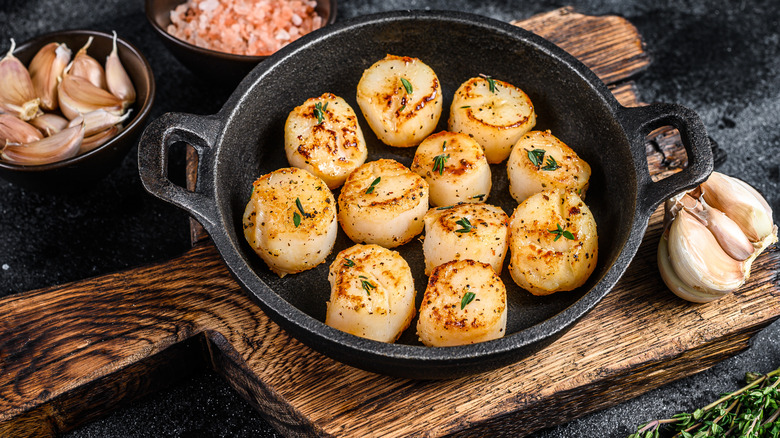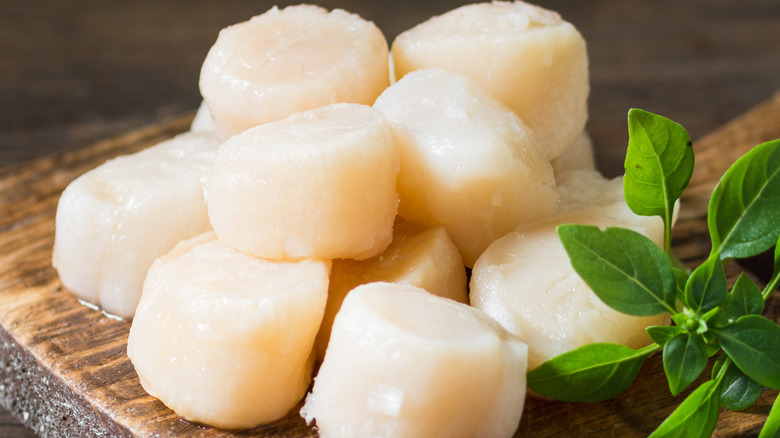Do Your Scallops Taste Soapy? Here's Why
If you binge-watch Hell's Kitchen, you'll notice that many chefs fall apart under the pressure of the fish station, especially when scallops are on the menu. Plenty can go wrong with these intimidating mollusks — from leaving the inside raw to producing a texture reminiscent of the sole of a shoe. But nothing ruins a dinner party faster than biting into a scallop and tasting soap.
It turns out, the success of your dish begins at the market. Molly Birnbaum, the executive editor of Cook's Science at America's Test Kitchen, explains to Splendid Table that there are two types of scallops that you can buy: wet or dry. It's this choice that makes the difference between that briny-sweet flavor hitting your tongue and one that leaves behind a soapy residue. So which scallop do you choose?
According to Birnbaum, wet scallops are treated immediately after they're caught with a mix of water and the preservative sodium tripolyphosphate, or STPP, before they are frozen. While STPP is a commonly used preservative in food, it is also used to produce synthetic detergents, which could explain the funky flavor. In contrast, dry scallops are shipped on ice without any added preservatives.
Why dry scallops are the better choice
Fine Cooking recommends buying "dry-packed" bay or sea scallops, which have an off-white or slightly pink color. Wet scallops, in comparison, are stark white due to the phosphate, a whitening agent, in the preservative.
When cooking, dry scallops will achieve a better sear. As Cooks Illustrated explains, when wet scallops hit the pan, they release the excess water absorbed in the preservation process. This steams the scallop rather than searing it, which gives the mollusk a rubbery texture while losing that sought-after golden crust.
According to Martha Stewart, regardless of which scallop you chose, gently press them with a paper towel to absorb any excess moisture before dropping them in a hot pan — using oil with a high smoke-point and taking care not to crowd the scallops. These added steps at the start of the cooking process will help you pull off the crucial sear.
While wet scallops keep longer because of the added preservatives, dry scallops have the benefit of being fresher. The price of dry scallops may be eye-popping at check out, but it's important to remember that wet scallops carry more fluid, so you could end up paying more for mere water weight ... and less flavor.

